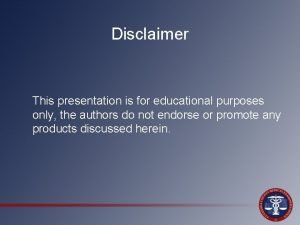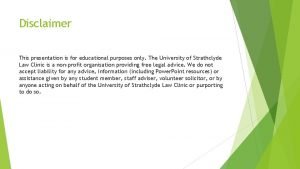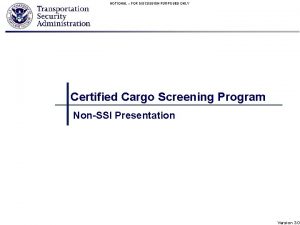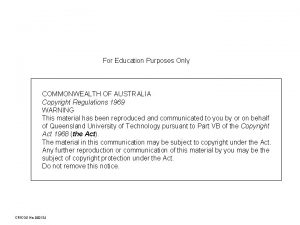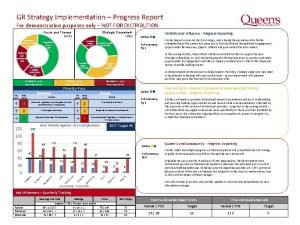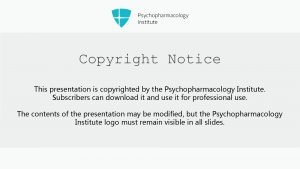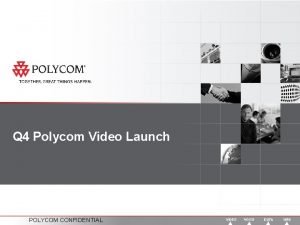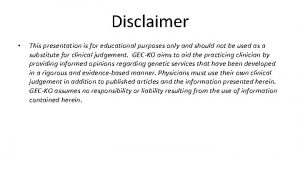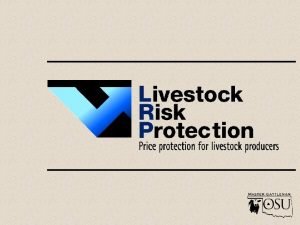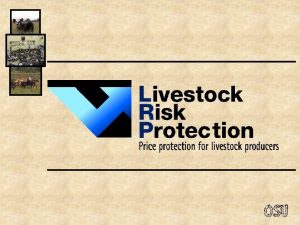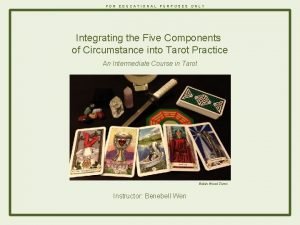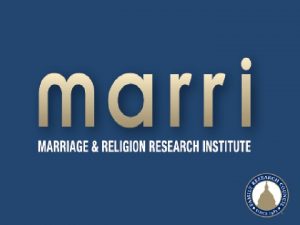Disclaimer This presentation is for educational purposes only





















![Case 1: Preconception 50 48 27 50 27 Bridgette [Ashkenazi Jewish] French Canadian 56 Case 1: Preconception 50 48 27 50 27 Bridgette [Ashkenazi Jewish] French Canadian 56](https://slidetodoc.com/presentation_image_h/a1382084a70593022d3b880d1f62a10b/image-22.jpg)


![[Preconception]Prenatal family history check list [Preconception]Prenatal family history check list](https://slidetodoc.com/presentation_image_h/a1382084a70593022d3b880d1f62a10b/image-25.jpg)


































- Slides: 59

Disclaimer • This presentation is for educational purposes only and should not be used as a substitute for clinical judgement. GEC-KO aims to aid the practicing clinician by providing informed opinions regarding genetic services that have been developed in a rigorous and evidence-based manner. Physicians must use their own clinical judgement in addition to published articles and the information presented herein. GEC-KO assumes no responsibility or liability resulting from the use of information contained herein.

Untangling the helix 2019: Why family history matters Developed by Ms. Shawna Morrison, Dr. Judith Allanson and Dr. June Carroll Originally presented by: June C. Carroll MD CCFP FCFP Sydney G. Frankfort Chair in Family Medicine Professor and Clinician Scientist Department of Family & Community Medicine Sinai Health System, University of Toronto Shawna Morrison MS CGC Certified Genetic Counsellor GEC-KO Program Manager Children’s Hospital of Eastern Ontario

Learning objectives 1. Identify patients whose family history suggests an increased risk of a genetic condition 2. Modify screening and management to improve patient outcomes 3. Find high quality genomics educational resources appropriate for primary care

Why take family history? All common diseases have some genetic component, and the strength of the genetic component may be revealed. d. 80 dx. 75 92 65 68 61 64 84 d. 32 83 75 dx. 70 59 Legend Breast cancer 60 dx. 60 48 45 Ovarian cancer

Why take family history? All common diseases have some genetic component, and the strength of the genetic component may be revealed. d. 65 dx. 63 92 65 68 dx. 50 61 64 dx. 62 84 d. 32 83 65 59 Legend Breast cancer 45 dx. 43 50 dx. 50 34 31 Ovarian cancer

Why take family history? All common diseases have some genetic component, and the strength of the genetic component may be revealed. Family history is the gold standard to assess the likelihood of a genetic condition and to identify individuals who may benefit from referral to a specialist. F H

Why take family history? All common diseases have some genetic component, and the strength of the genetic component may be revealed. Family history is the gold standard to assess the likelihood of a genetic condition and to identify individuals who may benefit from referral to a specialist. Family history can affect testing, surveillance and management recommendations.

But how do I do it in the limited time I have?

What is the best way to take a family history? Choose a family history tool that works for you, your patient, and your setting

Sensitive and specific to identify individuals at increased risk for seven conditions where there is evidence for effective intervention 1) 2) 3) 4) 5) 6) 7) Breast cancer Ovarian cancer Colorectal cancer Prostate cancer Melanoma Ischemic heart disease Type 2 diabetes Validated in Dutch population Houwink 2019 Clin Trans Med Development and validation of a family history screening questionnaire in Australian primary care. Emery 2014 Ann Fam Med

What is the best way to take a family history? Choose a family history tool that works for you, your patient, and your setting Take an initial complete family history Then do quick, regular updates targeting red flags with life cycle- specific questions

What to include in a family history? All first degree relatives (parents, children, siblings) news. umich. edu/

What to include in a family history? All first degree relatives (parents, children, siblings) If possible, include second (grandparents, aunts/uncles, half-siblings, nieces/nephews) and third (cousins) degree relatives Both sides of the family (maternal and paternal) news. umich. edu/ thewebmate. com

What to include in a family history? All first degree relatives (parents, children, siblings) If possible, include second (grandparents, aunts/uncles, half-siblings, nieces/nephews) and third (cousins) degree relatives Both sides of the family (maternal and paternal) Questions about consanguinity Are you and your partner related by blood, such as cousins? Are your parents or grandparents related by blood?

What to include in a family history? All first degree relatives (parents, children, siblings) If possible, include second (grandparents, aunts/uncles, half-siblings, nieces/nephews) and third (cousins) degree relatives Both sides of the family (maternal and paternal) Questions about consanguinity Ethnicity What is your ancestry? What country/countries did your family live in before coming to Canada?

What to include in a family history? All first degree relatives (parents, children, siblings) If possible, include second (grandparents, aunts/uncles, half-siblings, nieces/nephews) and third (cousins) degree relatives Both sides of the family (maternal and paternal) Consanguinity Ethnicity Age of death and cause of death, if known Age of diagnosis in affected individual

Case 1: Preconception Bridgette and her partner are planning to start their family. She reveals that her partner is adopted. For fun, together they purchased an online ancestry testing kit.

Case 1: Preconception In addition, to finding many cousins, her partner discovers that he is Ashkenazi Jewish. Bridgette already knows that she is French Canadian.

Preconception family history check list

Do any of the following apply to your patient, their partner, or their close family members? Yes No 1. Inherited condition or chromosomal disorder? • • Genetic disorder (e. g. neurofibromatosis, cystic fibrosis) Muscular disorder (e. g. Duchenne or Becker muscular dystrophy) Bleeding disorder (e. g. hemophilia) Down syndrome or a familial chromosomal translocation X 2. Physical difference present at birth (e. g. cleft lip, heart defect) X 3. Intellectual disability, developmental delay and/or autism X 4. Other major health concerns such as cardiomyopathy, neurological disease, epilepsy, hearing loss, and psychiatric disorders X 5. History of consanguinity X 6. Ashkenazi Jewish ancestry X 7. From a population qualifying for additional screening (see next) A ‘Yes’ response to any question above should prompt a more targeted family history. Referral to appropriate specialist may be considered. X

Try to know your local population IF YES, to #7 Do any of the following apply to your patient or their partner? Yes No 1. Belongs to any of the following populations: a. Mediterranean, Middle East, South East Asian, Western Pacific, Caribbean or South American…………………………………. . b. Amish, Hutterite, or Mennonite………………………………. X 2. Comes from the following Canadian regions: a. Saguenay Lac-Saint-Jean and Charlevoix………………………. . b. Bas-Saint-Laurent and Gaspésie (Quebec), adjoining New Brunswick…. c. Newfoundland……………………………………………. X 3. Belongs to the following Canadian indigenous populations: a. Aboriginal Manitoba………………………………………. . b. Cree…………………………………………………… X
![Case 1 Preconception 50 48 27 50 27 Bridgette Ashkenazi Jewish French Canadian 56 Case 1: Preconception 50 48 27 50 27 Bridgette [Ashkenazi Jewish] French Canadian 56](https://slidetodoc.com/presentation_image_h/a1382084a70593022d3b880d1f62a10b/image-22.jpg)
Case 1: Preconception 50 48 27 50 27 Bridgette [Ashkenazi Jewish] French Canadian 56 31

Reproductive genetic carrier screening in Canada Geneticseducation. ca > Point of Care tools > Carrier Screening in Canada

Case 2: Prenatal Bridgette and her partner are expecting their first baby (3 years later) She is about 6 weeks’ gestation by LMP You provide information regarding prenatal screening (provincial program, NIPT, no test) Update the pregnancy and family history Geneticseducation. ca > Public resources > Prenatal and preconception genetics
![PreconceptionPrenatal family history check list [Preconception]Prenatal family history check list](https://slidetodoc.com/presentation_image_h/a1382084a70593022d3b880d1f62a10b/image-25.jpg)
[Preconception]Prenatal family history check list

Do any of the following apply to your patient, their partner, or their close family members? Yes No 1. Inherited condition or chromosomal disorder? • • Genetic disorder (e. g. neurofibromatosis, cystic fibrosis) Muscular disorder (e. g. Duchenne or Becker muscular dystrophy) Bleeding disorder (e. g. hemophilia) Down syndrome or a familial chromosomal translocation X 2. Physical difference present at birth (e. g. cleft lip, heart defect) 3. Intellectual disability, developmental delay and/or autism X X 5. Other major health concerns such as cardiomyopathy, neurological disease, epilepsy, hearing loss, and psychiatric disorders X 6. History of consanguinity X 7. Ashkenazi Jewish ancestry X 8. From a population qualifying for additional screening A ‘Yes’ response to any question above should prompt a more targeted family history. Referral to appropriate specialist may be considered. X

Case 2: Prenatal 53 53 51 30 30 Bridgette P 6 W 59 34

Case 2: Prenatal 53 53 51 30 59 30 34 Bridgette P 6 W Consider urgent referral to Genetics 5 • • • ? ASD Developmental delay Appointment with developmental pediatrician pending

Case 2: Prenatal Geneticseducation. ca > Point of Care tools > Carrier screening in Canada

Fragile X syndrome Most common inherited form of intellectual disability 1 in 4, 000 boys and 1 in 6, 000 girls Global developmental delay & intellectual disability 25% will have autism spectrum disorder Of children with autism spectrum disorder, 1 -5% will have a fragile X syndrome diagnosis

Case 3: Pediatrics Carlos, 15, is a competitive hockey player in great health He is here for a health assessment Carlos has no questions or concerns However his father raises concerns about a recent trip to the ER where Carlos was treated following fainting spell during a game Carlos’s parents divorced 10 years ago, his father does his best to report the family history

Key family history questions for pediatric patients Do any of the following criteria apply to your patient or their family members (maternal and paternal)? Yes 1. Intellectual disability / developmental delay / autism spectrum disorder X 2. History of a physical difference present at birth (e. g. cleft lip) 3. Death before age 50 X X X 4. Cancer diagnosis before age 50 5. Early heart disease (<55 y men, <65 y women) 6. Inherited condition No X X A ‘Yes’ response to any question above should prompt a more targeted family history, including additional relatives, details about the diagnosis including age of diagnosis. Referral to appropriate specialist may be considered.

Case 3: Pediatrics 88 83 d. 40 MI Dementia dx 80 50 48 68 45 40 s d. 33 Syncopal episodes Thought to be stress related Thyroid 6 15 13 2 2 Carlos Syncope during hockey match ? MI or seizure SIDS, 11 years ago 4

Long QT syndrome It occurs in approximately 1 in 2, 000 to 1 in 2, 500 people Most forms of long QT syndrome (LQTS) are hereditary LQTS is usually autosomal dominant Treatable if diagnosed Geneticseducation. ca > Point of Care tools > Cardiogenetics ~ 20% of families with a clinically firm diagnosis of LQTS do not have a detectable pathogenic variant. Family history guides screening.

Case 4: Adult Darlene is a healthy, 45 year old, mother of two. She expresses relief about recent direct-to-consumer genetic test results because she does not have the breast cancer gene. Mygenecounsel. com

Key family history questions for adult patients Do any of the following criteria apply to your patient or their family members? Yes No 1. History of a physical difference present at birth (e. g. cleft lip) X 2. Death before age 50 X 3. Cancer diagnosis before age 50 X 4. Early heart disease (<55 y men, <65 y women) X 5. Inherited condition X A ‘Yes’ response to any question above should prompt a more targeted family history, including additional relatives, details about the diagnosis including age of diagnosis. Referral to appropriate specialist may be considered.

Case 4: Adult d. 60 s d. 82 d. 90 s d. 75 Br. CA dx. 60 s 95 d. 82 74 45 3 Br. CA dx. 44 d. 78 d. 90 d. 85 Br. CA dx. 62

Assessing hereditary breast and ovarian cancer X X X X Geneticseducation. ca > Point of care tools > Cancer genomics Consider referral to Genetics

She does not meet criteria for BRCA testing (<10% chance). The best person to offer genetic testing to is the youngest, affected individual. Another family member may be offered genetic testing. Her lifetime cancer risk is elevated (>25% using CA risk up to age 80 y IBIS). She may qualify for high risk cancer screening (MRI) based on family history alone. One or more moderate risk genes could be responsible for this family’s breast cancer.

Hereditary breast and ovarian cancer All cancer is genetic, only 5 -10% is hereditary 5 -10% 10 -15% 80% Sporadic Familial Hereditary

Direct-to-consumer genetic testing for hereditary breast and ovarian cancer Generally limited only to the highly penetrant BRCA 1 and BRCA 2 genes and the three common BRCA mutations found in Ashkenazi Jewish individuals Negative result does not eliminate family history associated risk There are other: Ø BRCA gene mutations Ø high risk breast cancer syndromes (e. g. Cowden syndrome) Ø moderate risk breast cancer genes (e. g. ATM, CHEK 2) Positive result should be confirmed in a clinical laboratory

Case 5: Adult Evan, 35 yo male with LDL-C 6. 9 mmol/L Evan, 40 yo male with LDL-C 6. 9 mmol/L Prescribed a statin Follow up LDL-C 7. 2 mmol/L Patient admits being non-compliant, wishes to treat hyperlipidemia with natural, lifestyle changes e. g. plant-based diet, exercise Explore the family history

Key family history questions for adult patients Do any of the following criteria apply to your patient or their family members? Yes X 1. History of a physical difference present at birth (e. g. cleft lip) 2. Death before age 50 X 3. Cancer diagnosis before age 50 4. Early heart disease (<55 y men, <65 y women) 5. Inherited condition No X X X A ‘Yes’ response to any question above should prompt a more targeted family history, including additional relatives, details about the diagnosis including age of diagnosis. Referral to appropriate specialist may be considered.

Case 5: Adult d. 65 74 HTN IDDM MI @40 y Co. D: MI 40 42 d. 50 Evan hyperlipidemia MI 3 2

Case 5: Adult 92 dementia stroke @60 s d. 65 75 MI @50 s HTN IDDM MI @40 y Co. D: MI MI @60 s 55 74 40 2 42 d. 50 Evan hyperlipidemia MI 3 2

Familial hypercholesterolemia About 1 in 250 Canadians is thought to be affected, but it is significantly underdiagnosed Autosomal dominant disorder resulting in 20 x increased risk of cardiovascular disease (CVD) and death Increased risk for atherosclerotic disease (e. g. stroke, peripheral vascular disease) Early diagnosis and treatment (statin+) can normalize life expectancy Cascade screening of family members allows for early identification and treatment of at-risk individuals

Familial hypercholesterolemia Canadian criteria for the clinical diagnosis of FH. Ruel 2018 Can J Cardiol. Reprinted with permission under the CC BY-NC-ND license Find on www. FHCanada. net ASCVD: atherosclerotic cardiovascular disease Consider referral to lipid specialist

Why family history matters? Family history is the gold standard to assess the likelihood of a genetic condition and to identify individuals who may benefit from referral to a specialist. Family history can affect testing, surveillance and management recommendations. One thorough family history, with regular, targeted updates can help to identify red flags, facilitating personalized risk assessment, appropriate referral and intervention.

Geneticseducation. ca > Point of Care tools > Family history > Red Flags

Where do I find more information? www. geneticseducation. ca





Geneticseducation. ca June Carroll MD CCFP FCFP June. Carroll@sinaihealthsystem. ca Shawna Morrison MS CGC morrison@cheo. on. ca

Family history tool resources • Your local genetics centre: – https: //geneticseducation. ca/genetics-centres/canada/canadian_clinics/ • General - For patients to complete: – Validated, primary care family history tool: Emery JD, Reid G, Prevost AT, Ravine D, Walter FM. Development and validation of a family history screening questionnaire in Australian primary care. Ann Fam Med. 2014; 12(3): 241– 249. doi: 10. 1370/afm. 1617 https: //www. ncbi. nlm. nih. gov/pmc/articles/PMC 4018372/ – A family health history tool for patients. This tool helps you create personalized booklets to start conversations about health in one’s family and community by the Genetic Alliance http: //www. familyhealthhistory. org/ – My Family Health Portrait by the US Surgeon General https: //phgkb. cdc. gov/FHH/html/index. html

Family history tool resources • Preconception/Prenatal: – Family health history form https: //www. marchofdimes. org/pregnancy/your-familyhealth-history. aspx – GEC-KO Reproductive genetic carrier screening Canada (For providers) https: //geneticseducation. ca/point-of-care-tools-2/reproductive-genetic-carrierscreening-in-canada/ • Cardiogenomics – GEC-KO point of care tools for Cardiogenomics https: //geneticseducation. ca/point-ofcare-tools-2/hypertrophic-cardiomyopathy-tool/ – Canadian Sudden Arrhythmia Death Syndromes (SADS) Foundation www. sads. ca • Familial hypercholesterolemia – GEC-KO point of care tool https: //geneticseducation. ca/point-of-care-tools-2/familialhypercholesterolemia/ – FH Canada www. fhcanada. net – The FH Foundation www. thefhfoundation. org

Hereditary breast and ovarian cancer family history resources • • GEC-KO https: //geneticseducation. ca/point-of-care-tools-2/hereditary-cancer-tools/ • Ontario Family History Assessment Tool: Gilpin CA, Carson N, Hunter AG. A preliminary validation of a family history assessment form to select women at risk for breast or ovarian cancer for referral to a genetics center. Clin Genet. 2000; 58(4): 299– 308. [Pub. Med] Referral Screening Tool: Bellcross CA, Lemke AA, Pape LS, et al. Evaluation of a breast/ovarian cancer genetics referral screening tool in a mammography population. Genet Med. 2009; 11(11): 783– 9. Family History Screening – 7: Ashton-Prolla P, Giacomazzi J, Schmidt AV, et al. Development and validation of a simple questionnaire for the identification of hereditary breast cancer in primary care. BMC Cancer. 2009; 9: 283. [Pub. Med] • •

Assessing hereditary breast and ovarian cancer RISK ASSESSMENT TOOL PERFORMANCE CHARACTERISTICS FOR PREDICTING RISK FOR BRCA MUTATIONS Ontario Family History Assessment Tool (FHAT) Sensitivity 91%– 94%; specificity 15%– 51%; PPV 31% Manchester Scoring System Sensitivity 58%– 93%; specificity 33%– 71% Referral Screening Tool (RST) Sensitivity 81%; specificity 92%; PPV 0. 80 Pedigree Assessment Tool (PAT) Sensitivity 100%; specificity 93%; PPV 0. 63 FHS-7 Sensitivity 88%; specificity 56%; PPV 0. 63 Adapted from: Risk Assessment, Genetic Counseling, and Genetic Testing for BRCA-Related Cancer: Systematic Review to Update the U. S. Preventive Services Task Force Recommendation [Internet].
 Disclaimer for educational purposes only
Disclaimer for educational purposes only This account is for educational purposes only
This account is for educational purposes only For discussion purposes only disclaimer
For discussion purposes only disclaimer For discussion purposes only disclaimer
For discussion purposes only disclaimer Training purposes only
Training purposes only Draft for discussion purpose only
Draft for discussion purpose only For training purposes only
For training purposes only Training purposes only
Training purposes only Education purposes only
Education purposes only Gr strategy
Gr strategy Powerpoint disclaimer examples
Powerpoint disclaimer examples Trazodone and qtc prolongation
Trazodone and qtc prolongation Informay
Informay Disclaimer investor presentation
Disclaimer investor presentation Slide todoc.com
Slide todoc.com Polycom vsx 8000 price
Polycom vsx 8000 price Presentation copyright disclaimer
Presentation copyright disclaimer Confidentiality disclaimer presentation
Confidentiality disclaimer presentation Disclaimer investor presentation
Disclaimer investor presentation Educational purpose only
Educational purpose only Take only photographs leave only footprints
Take only photographs leave only footprints Iso 22301 utbildning
Iso 22301 utbildning Typiska drag för en novell
Typiska drag för en novell Nationell inriktning för artificiell intelligens
Nationell inriktning för artificiell intelligens Ekologiskt fotavtryck
Ekologiskt fotavtryck Shingelfrisyren
Shingelfrisyren En lathund för arbete med kontinuitetshantering
En lathund för arbete med kontinuitetshantering Särskild löneskatt för pensionskostnader
Särskild löneskatt för pensionskostnader Personlig tidbok
Personlig tidbok Anatomi organ reproduksi
Anatomi organ reproduksi Densitet vatten
Densitet vatten Datorkunskap för nybörjare
Datorkunskap för nybörjare Boverket ka
Boverket ka Debattinlägg mall
Debattinlägg mall Delegerande ledarskap
Delegerande ledarskap Nyckelkompetenser för livslångt lärande
Nyckelkompetenser för livslångt lärande Påbyggnader för flakfordon
Påbyggnader för flakfordon Tryck formel
Tryck formel Offentlig förvaltning
Offentlig förvaltning Urban torhamn
Urban torhamn Presentera för publik crossboss
Presentera för publik crossboss Argument för teckenspråk som minoritetsspråk
Argument för teckenspråk som minoritetsspråk Bat mitza
Bat mitza Treserva lathund
Treserva lathund Luftstrupen för medicinare
Luftstrupen för medicinare Claes martinsson
Claes martinsson Cks
Cks Programskede byggprocessen
Programskede byggprocessen Mat för unga idrottare
Mat för unga idrottare Verktyg för automatisering av utbetalningar
Verktyg för automatisering av utbetalningar Rutin för avvikelsehantering
Rutin för avvikelsehantering Smärtskolan kunskap för livet
Smärtskolan kunskap för livet Ministerstyre för och nackdelar
Ministerstyre för och nackdelar Tack för att ni har lyssnat
Tack för att ni har lyssnat Referatmarkering
Referatmarkering Redogör för vad psykologi är
Redogör för vad psykologi är Stål för stötfångarsystem
Stål för stötfångarsystem Tack för att ni har lyssnat
Tack för att ni har lyssnat Borra hål för knoppar
Borra hål för knoppar Vilken grundregel finns det för tronföljden i sverige?
Vilken grundregel finns det för tronföljden i sverige?
